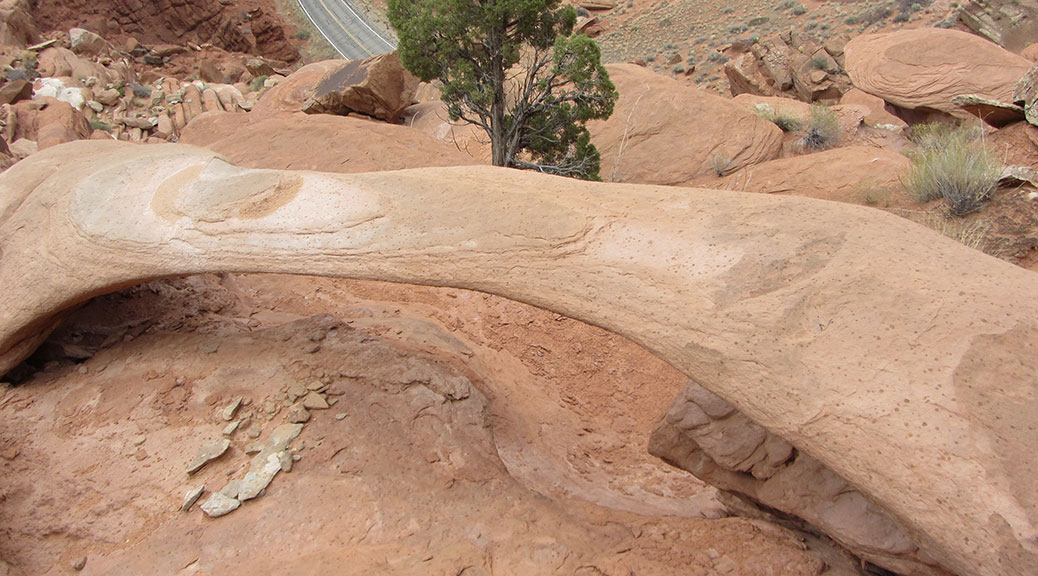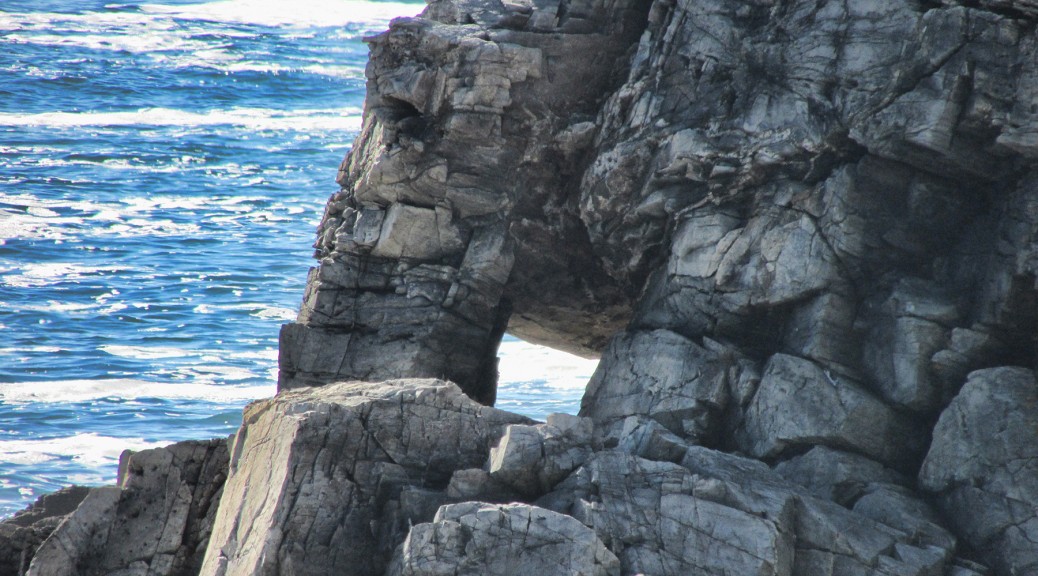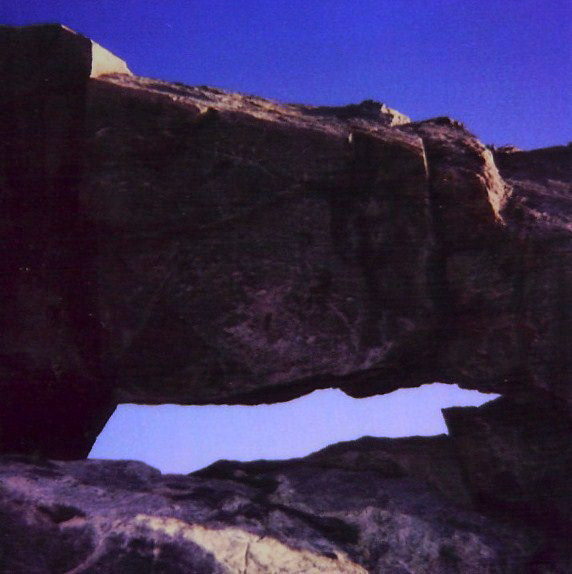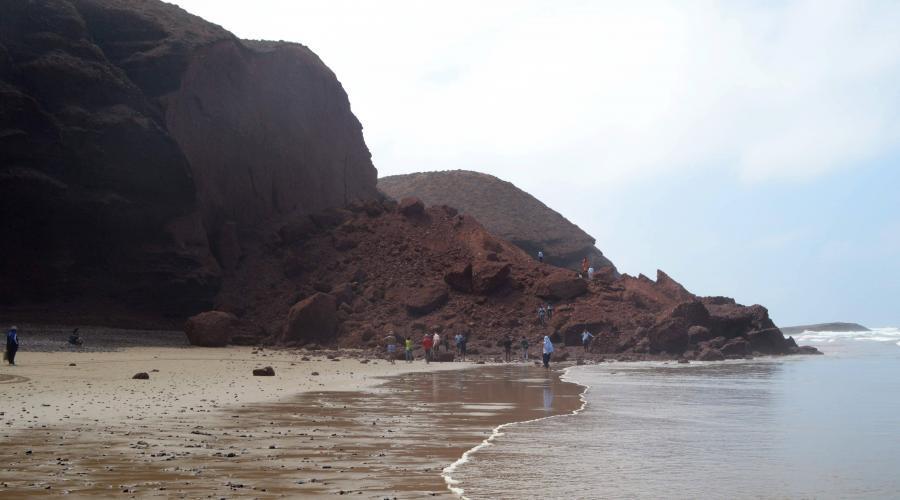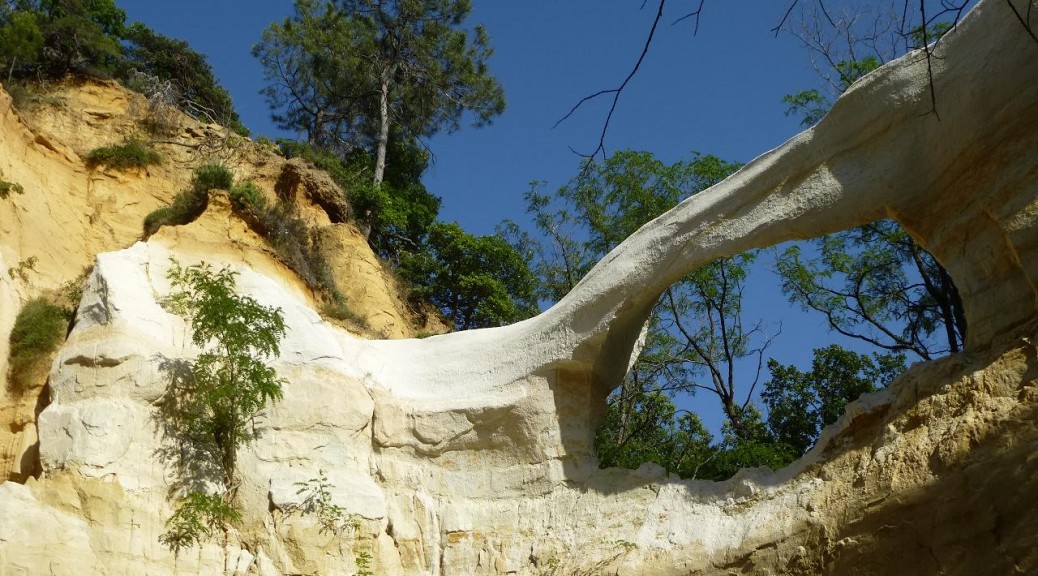Rainbow Arch, located just above the visitor center in Arches National Park, collapsed sometime this winter. A park ranger noticed it was no longer standing during a hike in February. The arch was cataloged by Stevens and McCarrick as SA-137 and had a reported span of 11.7 feet.
A research team from the University of Utah, including Jeff Moore and Paul Geimer, had actually been studying this arch not long before the collapse. The “before collapse” photos here were taken by Jeff Moore, and the “after collapse” photos were taken by Paul Geimer. The “before-after” comparison below was assembled by Holly Walker.
The team made vibration measurements four times at the site in 2017, focusing on a prominent crack working through the center of the span that appeared to be putting the structure in jeopardy. The crack is circled in the photo below.
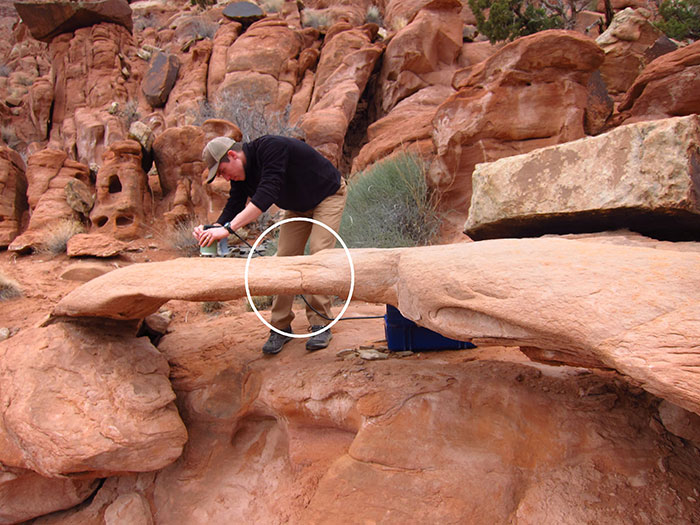
Close-up photo of the crack before collapse:

However, the team observed no changes in the crack or vibration characteristics over 12 months, and backed off on their monitoring program, believing the arch to be more stable that it appeared.
The collapse is bittersweet for the team, as it highlights and validates the fragility of these features, but unfortunately they were unable to record its last few weeks and months and identify accumulating damage.
Below is a photo after collapse.

While they can’t say for certain what caused the collapse, they believe the most likely explanation is that fatigue caused by daily and annual heating cycles finally stressed the tip of the crack enough to cause a runaway failure sometime this past winter.
Rainbow Arch lives on in the virtual world as an interactive 3D model made by the research team that can be found at https://skfb.ly/VMvB.

